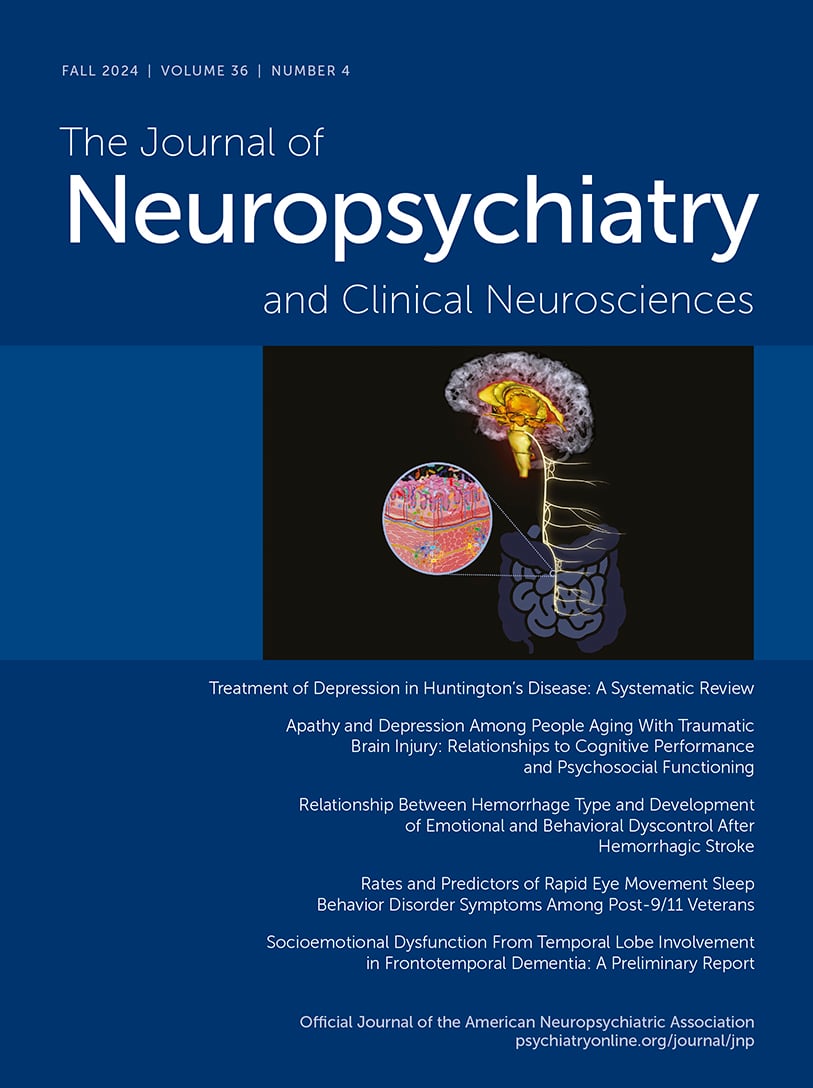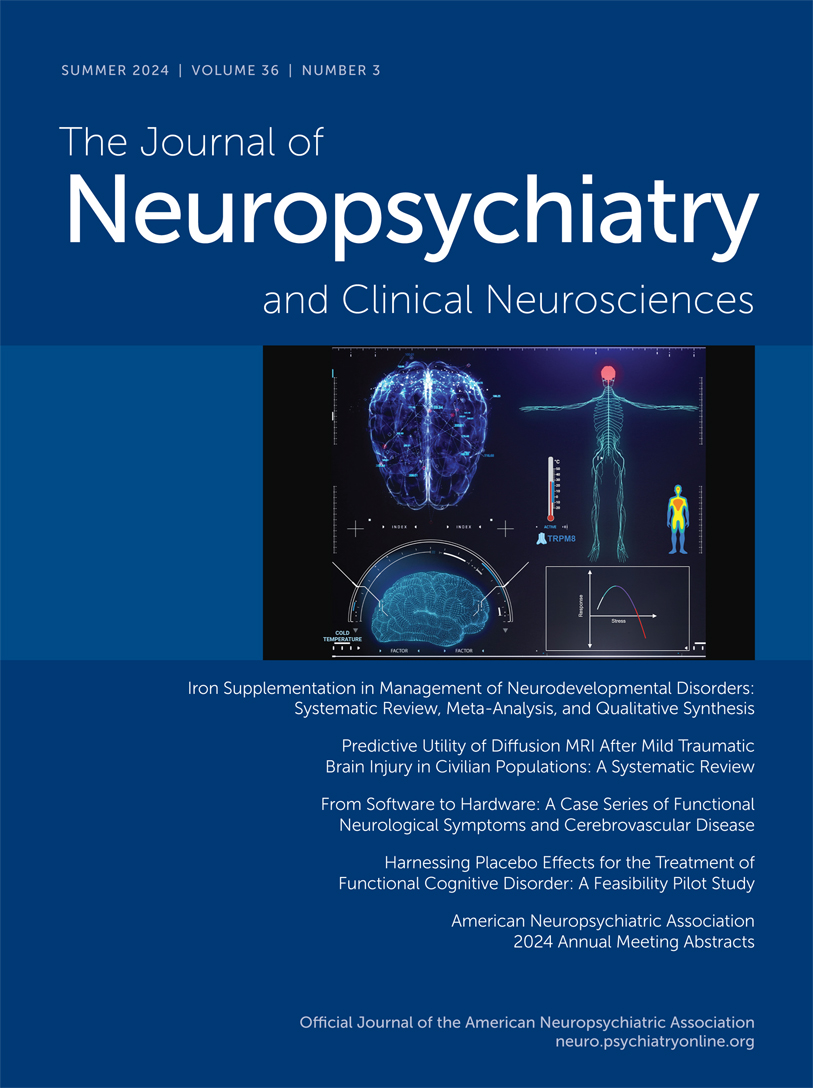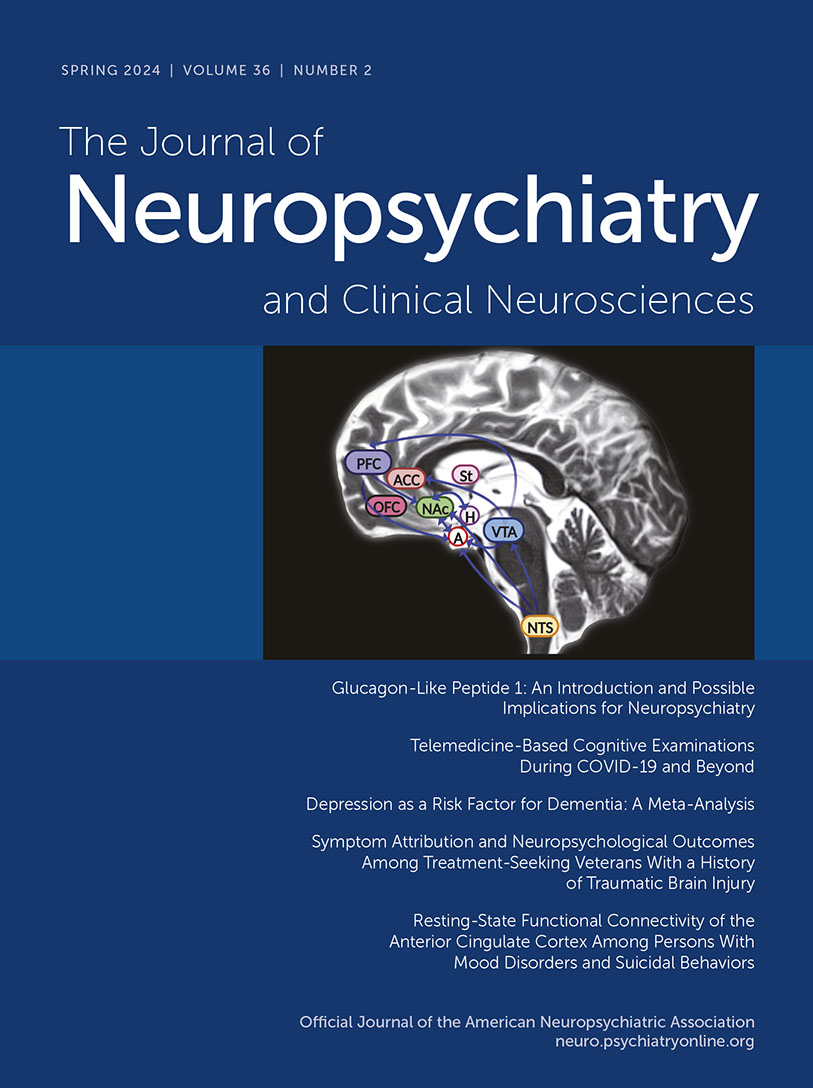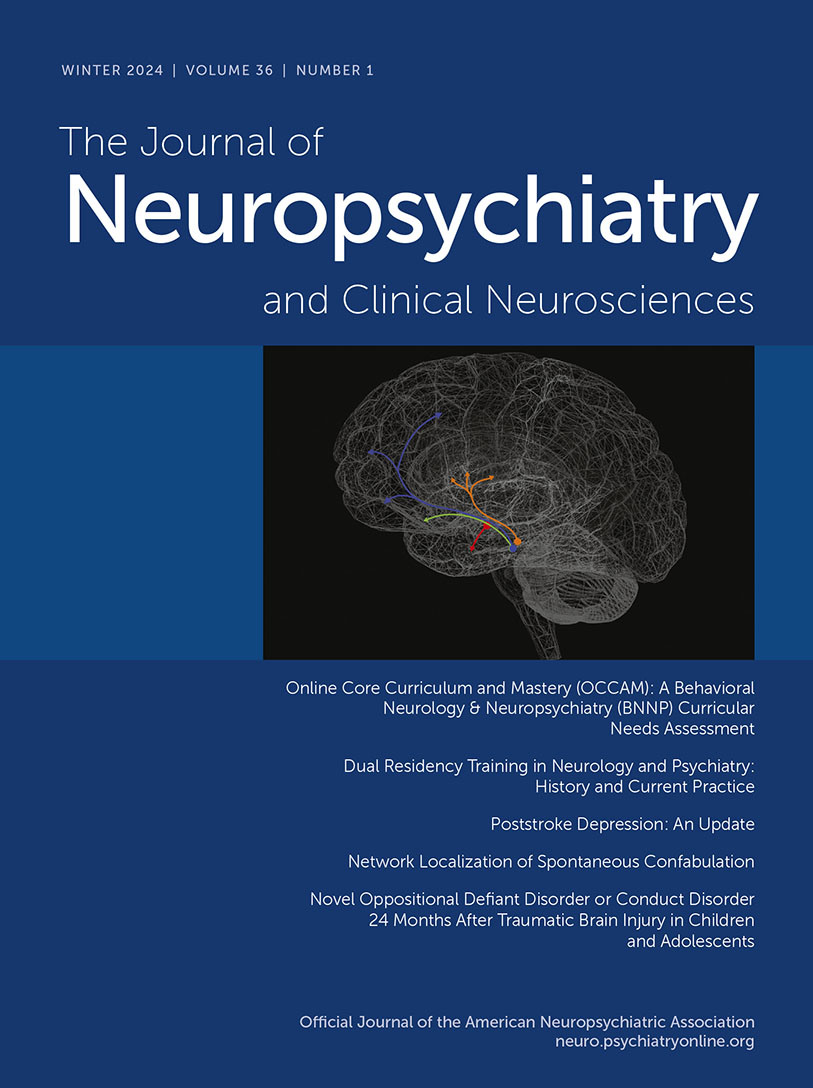The Journal of Neuropsychiatry and Clinical Neurosciences
- Volume 13
- Number 1
- February 2001
Windows to the Brain
Special Article
Publication date: 01 February 2001
Pages5–21The behavioral and psychological symptoms of dementia (BPSD) can have serious debilitating effects on the patient and increase caregiver burden. Investigations into the underlying neuropathology indicate that the serotonergic system may contribute to ...
https://doi.org/10.1176/jnp.13.1.5Publication date: 01 February 2001
Pages22–34Panic patients consistently show exaggerated lactic acid response to alkalosis, whether produced by hyperventilation or by sodium lactate infusion. Understanding why this occurs may provide important clues to the pathogenesis of panic disorder. Although ...
https://doi.org/10.1176/jnp.13.1.22Regular Article
Publication date: 01 February 2001
Pages35–41Mood fluctuations have been reported in up to two-thirds of patients with Parkinson's disease who experience motor fluctuations. Most researchers indicate that mood fluctuations tend to be associated with motor fluctuations in that patients experience ...
https://doi.org/10.1176/jnp.13.1.35Publication date: 01 February 2001
Pages42–49Neuropsychiatric symptoms are common in basal ganglia disorders and may have severe clinical consequences. The authors compared the neuropsychiatric manifestations of patients with Parkinson's disease (PD) and progressive supranuclear palsy (PSP). All 103 ...
https://doi.org/10.1176/jnp.13.1.42Publication date: 01 February 2001
Pages50–55Positron emission tomography was used to examine the mechanisms of the psychotic phenomenon in Alzheimer's disease (AD). Data from 2 patients with delusions and 2 with hallucinations were compared with those of 5 AD patients without psychosis. The ...
https://doi.org/10.1176/jnp.13.1.50Publication date: 01 February 2001
Pages56–60Positron emission tomography was used to evaluate 3 Alzheimer's disease (AD) patients: 1 with major depression, 1 with emotional lability, and 1 with apathy. Compared with 5 non–mood-disordered AD patients, the patient with depression had diminished ...
https://doi.org/10.1176/jnp.13.1.56Publication date: 01 February 2001
Pages61–69Psychosis is a rare but devastating sequela of traumatic brain injury (TBI). This study examined risk factors for developing a psychosis secondary to TBI (PSTBI). Demographics of 25 inpatients with PSTBI were statistically analyzed for risk factors. Data ...
https://doi.org/10.1176/jnp.13.1.61Publication date: 01 February 2001
Pages70–76Previous studies of personality change in multiple sclerosis (MS) relied on brief, nonstandardized assessments or tests that are confounded with symptoms of acute psychiatric disorder. Objectives of the present study were to evaluate character change in ...
https://doi.org/10.1176/jnp.13.1.70Publication date: 01 February 2001
Pages77–87EEG spectral analyses were conducted from 19 scalp locations for patients with mild (n=40), moderate (n=25), and severe (n=43) traumatic brain injury (TBI), 15 days to 4 years after injury. Severity of TBI was judged by emergency hospital admission ...
https://doi.org/10.1176/jnp.13.1.77Publication date: 01 February 2001
Pages88–94The authors examined the effects of depressive mood (Hamilton Rating Scale for Depression [Ham-D]) on basal ganglia–mediated psychomotor speed (motor test battery) in 202 HIV-1 seropositive homosexual males with no prior history of antiretroviral ...
https://doi.org/10.1176/jnp.13.1.88Correction
Clinical and Research Reports
Publication date: 01 February 2001
Pages96–100The authors determined brain ventricular size (ventricular brain ratio [VBR]) in 39 ambulatory adult mentally retarded individuals who did or did not require psychotropic medication for violent/destructive behavior. The mean VBR of mentally retarded ...
https://doi.org/10.1176/jnp.13.1.96Publication date: 01 February 2001
Pages101–105A Vietnam veteran with a combat-related posttraumatic stress disorder developed recurrent dissociative flashbacks (related to the atrocities of a specific war incident) several months after suffering a traumatic brain injury. CT disclosed a small lesion ...
https://doi.org/10.1176/jnp.13.1.101Publication date: 01 February 2001
Pages106–109A 48-year-old combat veteran sustained a right frontal cerebral infarct at the age of 45 years. The patient's family reports that prior to the infarct he had a preoccupation with memories of combat, as well as nightmares, avoidance of reminders, and ...
https://doi.org/10.1176/jnp.13.1.106Book Reviews
Letter
Calendar
ANNOUNCEMENT
Abstracts
Past Issues
View Issues Archive
Vol. 36 | No. 4

Vol. 36 | No. 3

Vol. 36 | No. 2
